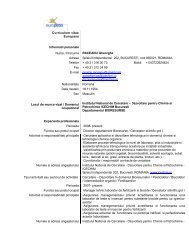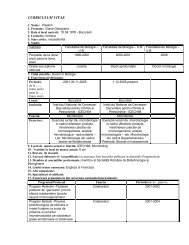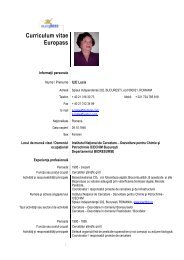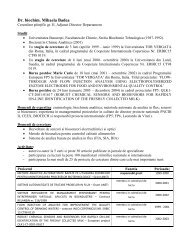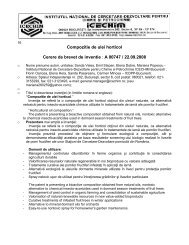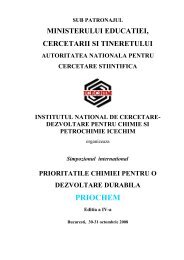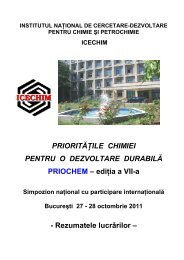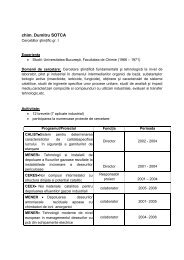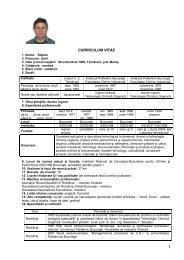INSTITUTUL NAÅ¢IONAL DE CERCETARE-DEZVOLTARE - ICECHIM
INSTITUTUL NAÅ¢IONAL DE CERCETARE-DEZVOLTARE - ICECHIM
INSTITUTUL NAÅ¢IONAL DE CERCETARE-DEZVOLTARE - ICECHIM
- No tags were found...
You also want an ePaper? Increase the reach of your titles
YUMPU automatically turns print PDFs into web optimized ePapers that Google loves.
1. Bioresurces and biomaterials PSURFACTANTS FROM RENEWABLE SOURCESAdina Ionuta Gavrila, Petre ChipuriciPolitehnica University of Bucharest, Faculty of Applied Chemistry and Materials Science,Department Bioresources and Polymer Science, 149 Calea VictorieiBiosurfactants are very important because they can replace chemically synthesizedsurfactants in many industrial applications 1 . These biosurfactants can be obtained fromrenewable substrates, that are readily available and inexpensive 2 . Surfactants based oncarbohydrates are biocompatible, completely biodegradable, non-toxic, without odour andtaste and non-irritant for skin. For this reason they are used in pharmaceutical, medicine,bioremediation and food areas 3 .The purpose of this paper is to develop an efficient enzymatic method for the synthesisof carbohydrate esters of fatty acids. Development of synthetic methods involve improvingthe outcome of the reaction rate, conversion, regioselectivity, productivity, safety andcatalytic stability. The main objective is the development of enzymatic methods for obtainingglucose esters with fatty acids, using solvents as adjuvants in the esterification process. Theexperimental program followed the influence of various parameters on the conversion of fattyacids (temperature reaction; enzyme concentration; type of fatty acid; solvent type).The results of experiments show the possibility of obtaining glucose fatty acid estersby enzymatic esterification. Increasing temperature lead to a high acid conversion, but atemperature above 60 °C produces denaturation of the enzyme. Increasing the enzymeconcentration leads to an increase in fatty acid conversion. A significant increase occurs up to12% enzyme concentration, higher concentrations lead to small increase of acid conversionand does not justify the use of large amounts of enzyme.The advantages of enzymatic synthesis are higher yields and milder reactionconditions, resulting in high quality products with low energy consumption.References1. Kosaric N., Pure & Appl. Chem., 64 (11), pp. 1731-1737,1992.2. Baccile, N.; Nassif, N.; Malfatti, L.; Van Bogaert, I. N. A.; Soetaert, W.; Pehau-Arnaudet, G.; Babonneau, F.Green Chem., 12, 1564–1567, 2010.3. Chang, S. W., Shaw, J. F., New Biotechnology, 26 (3-4), pp. 109-116, 2009.




